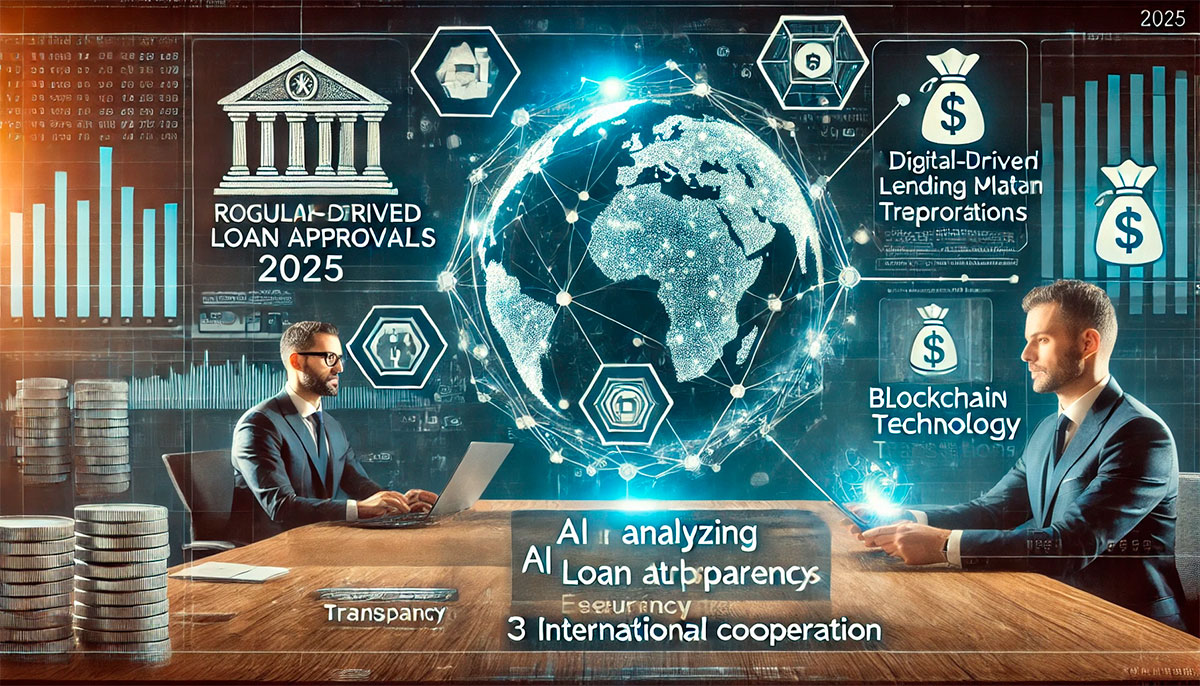
The lending market has always been a cornerstone of the financial world, a place where individuals and businesses alike can turn to when they need capital. Over the years, the market has evolved, driven by technological advancements, changing consumer expectations, and, perhaps most significantly, the shifting regulatory landscape. As we approach 2025, the regulatory framework for the lending market is undergoing significant transformations. These changes aim to balance the need for financial inclusion with the need for stability, transparency, and fairness in the industry. Let’s explore what the future holds for the lending market and the regulations that will shape it.
The Evolution of Lending Regulations
To understand the regulatory framework for the lending market in 2025, it’s important to look at the evolution of lending regulations over the past few decades. Historically, lending was a straightforward process—banks and other financial institutions lent money to borrowers based on a set of established criteria, and the terms of the loan were clearly defined. However, as technology advanced, lending began to expand into new realms, leading to the rise of online lending platforms, peer-to-peer lending, and other non-traditional forms of financing.
As these new forms of lending gained traction, regulatory bodies were forced to adapt. In many cases, the existing rules were outdated and unable to adequately address the unique challenges posed by online and peer-to-peer lending. Regulators had to find a way to ensure that these new players in the market operated fairly and transparently, without stifling innovation or hindering access to credit for consumers.
What Will the Regulatory Framework for the Lending Market Look Like in 2025?
Looking ahead to 2025, the regulatory framework for the lending market will likely be shaped by a combination of old and new principles. While the core objectives of regulation—consumer protection, financial stability, and fair competition—will remain unchanged, the methods and tools used to achieve these goals will evolve.
One of the most significant trends we are likely to see in 2025 is the continued rise of digital lending platforms. These platforms, which leverage technology to provide loans quickly and efficiently, have become an integral part of the lending landscape. Regulators will need to develop specific rules that govern the operation of these platforms, ensuring that they are transparent, accountable, and secure. This might include measures to protect consumers from predatory lending practices, as well as regulations aimed at preventing fraud and ensuring the security of personal data.
In addition to regulating digital lenders, regulators will also need to address the increasing role of artificial intelligence (AI) and machine learning in the lending process. These technologies are being used to assess creditworthiness, determine loan terms, and even detect fraudulent activity. While AI has the potential to make lending more efficient and accurate, it also raises important questions about fairness and transparency. In 2025, regulators will need to develop guidelines to ensure that AI systems are used responsibly and that they do not perpetuate bias or discrimination in lending decisions.
Global Trends and Harmonization of Regulations
One of the challenges facing the regulatory framework for the lending market in 2025 is the increasing globalization of finance. As more consumers and businesses turn to cross-border lending, regulators will need to find ways to harmonize rules across different jurisdictions. This will help to ensure that the lending market remains stable and predictable, even as it becomes more interconnected. In many cases, countries will need to work together to establish common standards for things like consumer protection, data privacy, and anti-money laundering measures.
We are already seeing efforts to harmonize regulations at the international level. For example, the European Union has taken steps to create a unified regulatory framework for financial services, which includes provisions related to lending. These efforts are likely to continue and expand in the coming years, as regulators seek to create a more cohesive global regulatory environment. By 2025, we may see more countries adopting similar regulations, which will help to streamline the lending process and reduce the risks associated with cross-border lending.
Consumer Protection and Financial Inclusion
One of the key objectives of the regulatory framework for the lending market in 2025 will be to protect consumers while also promoting financial inclusion. As lending expands into new areas, regulators will need to ensure that consumers are not taken advantage of by unscrupulous lenders or subjected to unfair terms. This includes ensuring that interest rates are transparent, loan terms are clear, and borrowers have access to sufficient information to make informed decisions.
At the same time, regulators will need to balance these protections with the need to promote financial inclusion. In many parts of the world, millions of people still lack access to traditional banking services. By fostering innovation and ensuring that new forms of lending are accessible and affordable, regulators can help bridge the gap between underserved communities and the financial system. This will be especially important in developing markets, where mobile lending platforms and other digital solutions have the potential to bring financial services to people who have never had access to a bank account.

Challenges and Opportunities for the Lending Market
The regulatory framework for the lending market in 2025 will not be without its challenges. One of the biggest obstacles will be striking the right balance between regulation and innovation. Too much regulation could stifle innovation and limit access to credit, while too little regulation could lead to exploitation and financial instability. Regulators will need to be agile and responsive, adapting to new developments in the market while ensuring that the core principles of consumer protection, transparency, and fairness are upheld.
However, with these challenges come significant opportunities. By embracing new technologies and fostering innovation, regulators can help create a lending market that is more inclusive, efficient, and transparent than ever before. In 2025, we may see a lending market that is more accessible to consumers, with new players offering a wider range of financial products and services. At the same time, robust regulatory oversight will ensure that these developments are in the best interests of consumers and the financial system as a whole.
Regulatory Framework Snapshot for 2025
Here’s a snapshot of the expected regulatory framework for the lending market in 2025, summarizing the key components that will likely define the future landscape.
| Regulation Focus | Expected Changes |
|---|---|
| Digital Lending Platforms | Introduction of specific rules governing digital platforms, ensuring transparency and consumer protection. |
| Artificial Intelligence | Development of guidelines to ensure fairness and transparency in AI-driven lending decisions. |
| Global Harmonization | Increased international cooperation to align lending regulations, including consumer protection and anti-money laundering measures. |
| Interest Rates and Loan Terms | Regulation of interest rates and mandatory clear communication of loan terms to prevent predatory lending. |
| Consumer Protection | Enhanced measures for safeguarding consumers from exploitation, particularly in underserved markets. |
| Use of Blockchain | Implementation of blockchain for transparency and fraud detection in loan transactions. |
Conclusion
As we approach 2025, the regulatory framework for the lending market will continue to evolve in response to changing market conditions and technological advancements. The future of lending is bright, with new opportunities for consumers and businesses alike. However, these opportunities must be balanced with strong regulations that protect consumers, promote financial inclusion, and ensure the stability of the financial system. By embracing innovation and fostering collaboration across borders, regulators can help shape a lending market that is transparent, fair, and inclusive, laying the groundwork for a strong and sustainable financial future.





